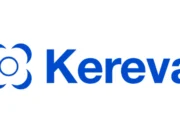CVE-2018-17463, a type confusion vulnerability in Chrome’s V8 JavaScript engine, allowed attackers to execute arbitrary code by exploiting improper side-effect modeling in TurboFan’s JSCreateObject operation.
This analysis highlights the tools and methodologies used to exploit this vulnerability.
1. Environment Setup And Debugging Tools
- V8’s
d8Shell: The exploit relied on Chrome’sd8debug shell to test JavaScript snippets, inspect object memory layouts, and trigger JIT optimizations.- Flags like
--allow-natives-syntaxenabled runtime functions (e.g.,%DebugPrint) to analyze object maps and properties.
- Flags like
- Turbolizer: This visualization tool mapped TurboFan’s intermediate representation (IR) during optimization phases. It helped identify redundant
CheckMapnode elimination, which led to type confusion.
2. Memory Analysis And Primitive Development
- WinDbg: Critical for low-level debugging, WinDbg inspected heap objects (e.g.,
FixedArrayvs.NameDictionary) to validate memory corruption.- Breakpoints on V8 runtime functions (e.g.,
Runtime_DebugPrint) tracked object transitions duringObject.createoperations.
- Breakpoints on V8 runtime functions (e.g.,
- addrOf and fakeObj Primitives:
- addrOf: Leaked object addresses by confusing a property’s double value with an object pointer.
- fakeObj: Wrote controlled data to memory by exploiting overlapping properties in optimized code.
These primitives usedFloat64ArrayandBigUint64Arrayto convert between doubles and 64-bit integers.
3. Gaining Arbitrary Read/Write
- ArrayBuffer Corruption: By corrupting an
ArrayBuffer’sbacking_storepointer, attackers redirected memory accesses. A secondArrayBufferallowed arbitrary read/write viaTypedArrayviews, enabling manipulation of V8 heap structures.
4. Bypassing NX With WebAssembly
- WebAssembly (Wasm): A Wasm instance’s RWX (read-write-execute) memory region was leveraged to execute shellcode. The exploit:
- Leaked the Wasm instance’s jump table address via
memory.read64. - Wrote shellcode (e.g., a
calc.exepayload) into the RWX region usingmemory.write. - Invoked the Wasm function to trigger execution.
- Leaked the Wasm instance’s jump table address via
5. Patch-Gapping And Mitigation Evasion
The exploit demonstrated patch-gapping—using public vulnerability details to target unpatched systems. Tools like git analyzed V8’s source history to reverse-engineer fixes and identify trigger conditions.
Exploiting CVE-2018-17463 required a blend of compiler analysis (Turbolizer), memory forensics (WinDbg), and precise control over V8’s heap (via addrOf/fakeObj).
WebAssembly’s RWX regions provided the final code execution vector. This case underscores the importance of side-effect modeling in JIT compilers and the role of memory-safe languages in mitigating such issues.
For defenders, tools like V8’s sandbox and pointer compression (later mitigations) highlight ongoing efforts to harden browser engines against similar exploits.












%20Works.png)


%20(1).webp)

.webp)